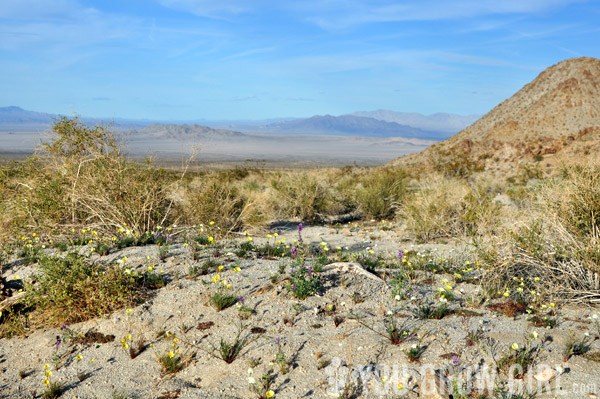
Two weeks ago I posted a series of desert wildflower images that I took in and around Joshua Tree, California with the promise of more. When I started working on this second set, I realized I have enough for three posts, so I am limiting this one to a specific spot in the Mojave rather than a full range of locations.
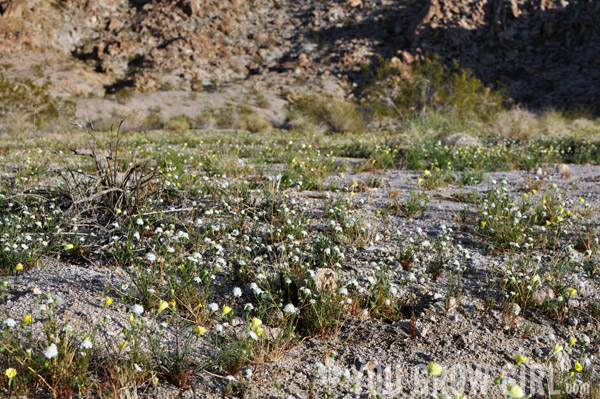
We found this roadside stop while driving north on Amboy Road, headed toward the Mojave National Preserve. The stop wasn’t marked on the map, but you can see it if you zoom in on the satellite image. I noticed it because as we drove up into the mountain, the roadside was suddenly covered in a blanket of yellow flowers. I saw the stop too late, but we found it again on our way back at the end of the day, just before the light was fading. It’s hard to see and a tricky location to turn off because the road there is windy and the speed is high. I’ve provided directions at the end of this post in case you happen to be in the area and want to find it.
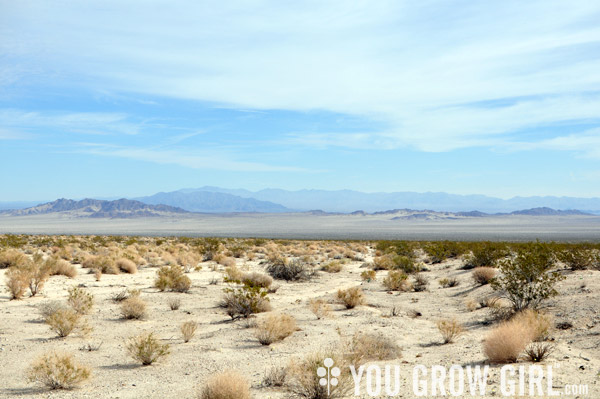
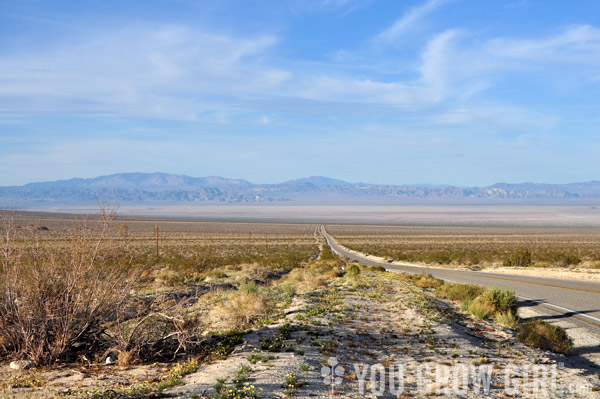
Looking north down Amboy Road.
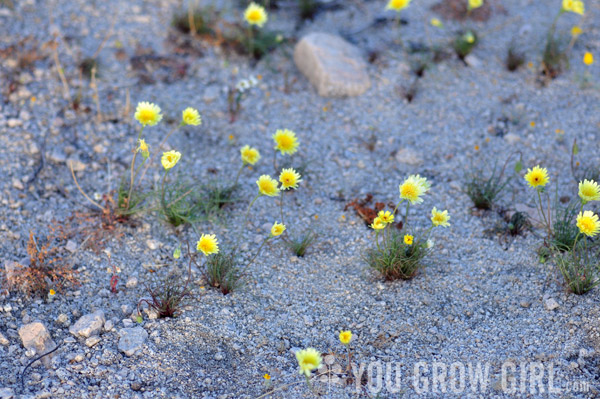
The long distance views from this spot are amazing, even if the wildflowers aren’t in bloom. So far, none of my digital photos (I still have film to process) even begin to capture what it felt like to stand there and look down into the vast expanse of the desert. I felt intimidated, humbled, and awed by this sprawling land that appears empty and sparse on first glance, yet is so alive. It also visually captured for me what it is like to fully understand how infinitesimal and insignificant I am relative to the whole of the world. I am like just one of the millions of creosote bushes that I could see like little specks in the distance.
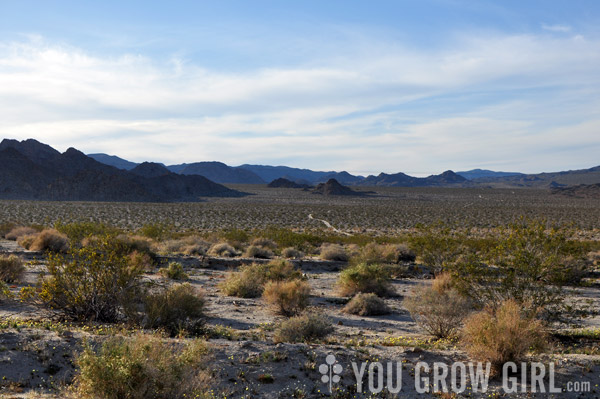
This view looks across the road (west) onto what is a massive military base (Marine Air Ground Task Force Training Command) that stretches 931.7 mi² of the high desert. You don’t want to go wandering too far in this direction. They do test bombing there and we could hear it quite loudly from this spot. It adds to the intimidating ambiance. So did the convoy of massive military vehicles that passed by.
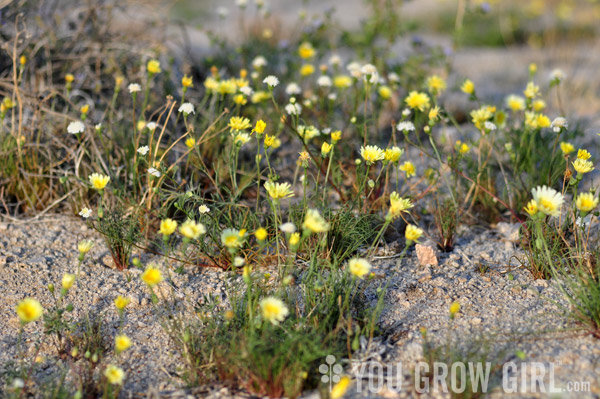
Desert dandelion (Malacothrix californica) and desert pincushion (Chaenactis fremontii) blowing in the wind. It was very windy on this side of the mountain.
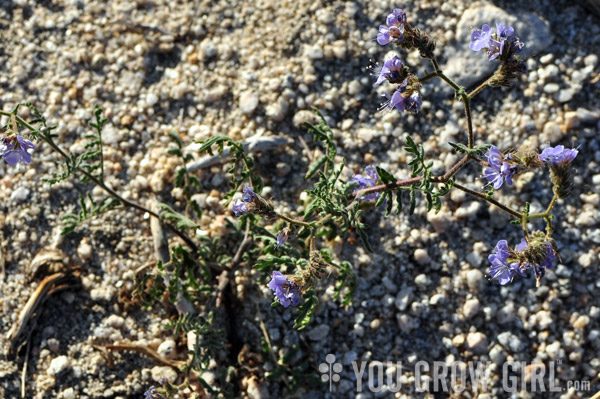
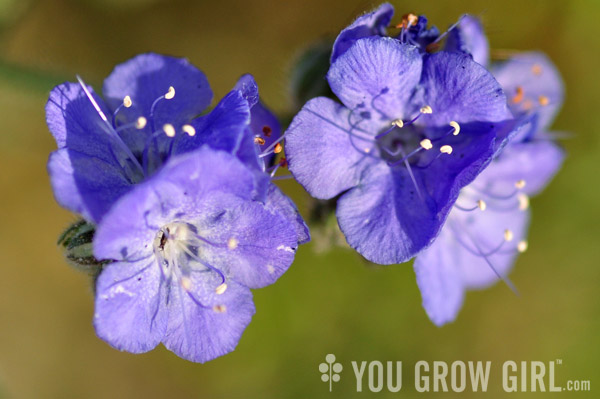
Wild heliotrope (Phacelia distans). I had some trouble identifying the species here because there are so many different Phacelia (aka scorpionweeds) in the region.
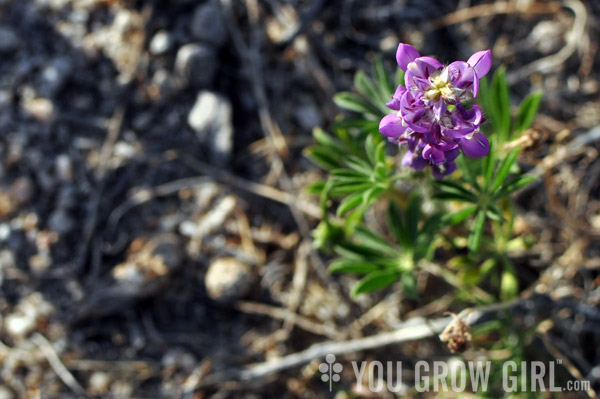
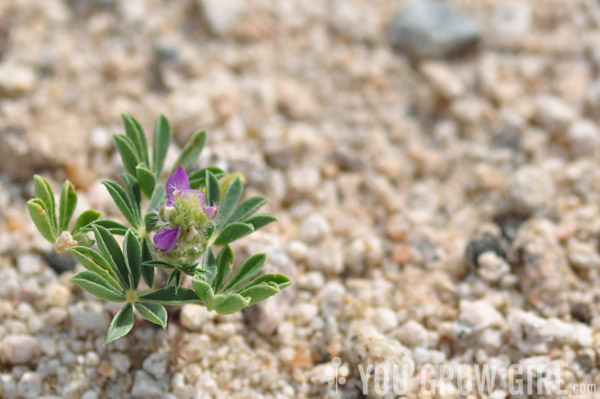
I’m leaving this as Lupine (Lupinus), because I’m not confident that this is the Arizona lupine (Lupinus arizonicus) listed in the California Desert Wildflowers book I used as a resource to identify some of these plants.
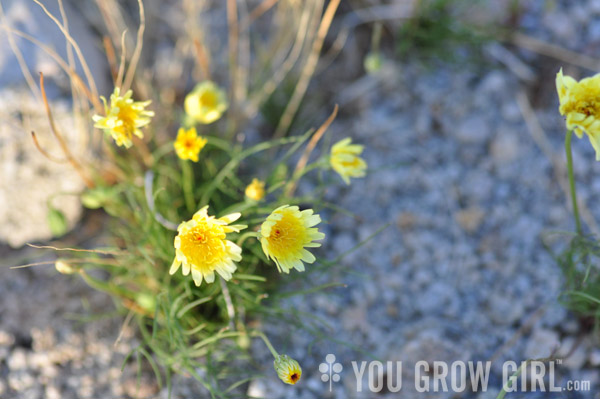
Desert dandelion (Malacothrix californica) was probably the most common wildflower that we spotted in bloom in multiple locations on the trip. However, they were most prolific in this area.
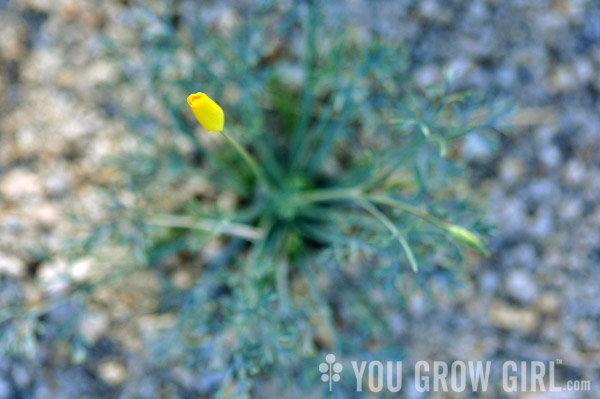
Desert gold poppy (Eschscholzia parishii) poised to open.
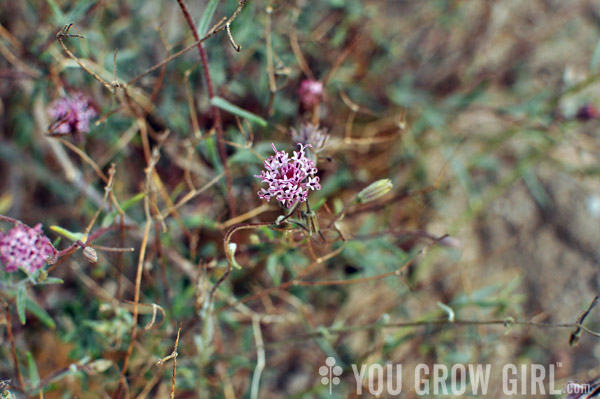
Spanish needles (Palafoxia arida).
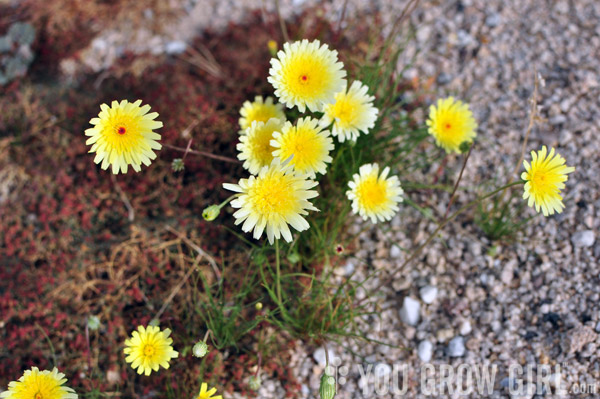
Desert dandelion (Malacothrix californica).
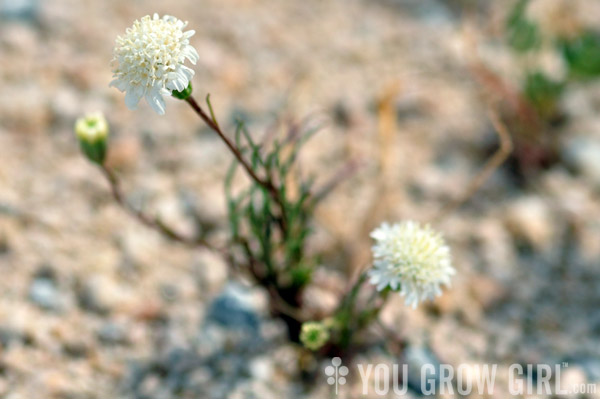
Desert pincushion (Chaenactis fremontii).
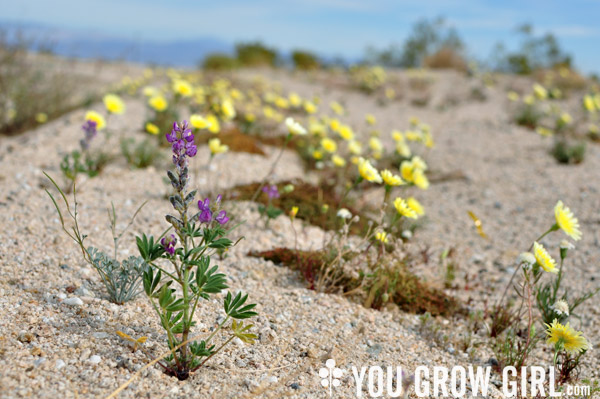
I took this photo when we stopped on the side of the road on the way out, just after we spotted and missed the turnoff. When I got out of the car, this scene greeted me. Banks of sand were dotted with all sorts of blooming flowers. This trip really challenged any remaining misconceptions I had about the desert as a monotone, colourless place. I expected most of the flowers to be seen on creosote bushes and cacti, and was surprised by the legions of tiny wildflowers that dotted the landscape. Depending on where you are, cacti are not nearly as prolific or dominant as you’d expect.
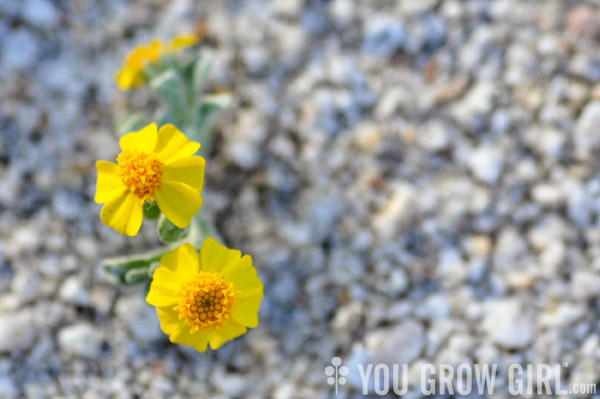
Wallace’s Woolly Daisy (Eriophyllum wallacei) are the tiniest flowers I spotted on the trip. They’re smaller than the tip of my pinky, but their bright colour makes them pop against the desert sand.
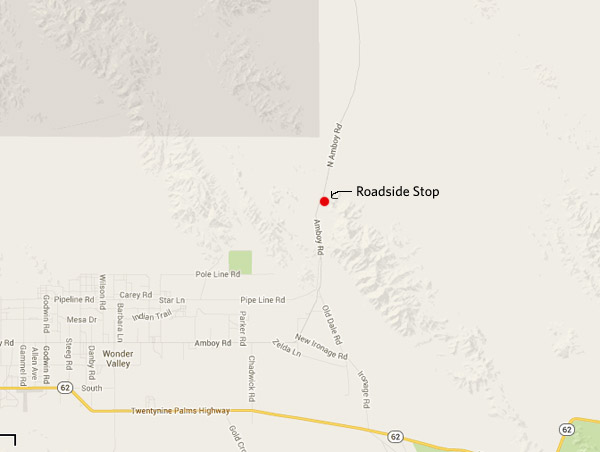
How to find the stop:
Just as you begin heading north on Amboy Road, you will drive up into mountainous terrain. It is labelled Sheep Hole Mountains on the map.The road here winds for a bit. As it comes down there are a few more turns. The turnoff is on the east side of the road, just before it straightens out. Start looking for it before you begin heading down. We had a car behind us and had to put our blinker on early to signal we’d be slowing soon because while traffic was extremely light here, everyone wanted to drive well above the speed limit.
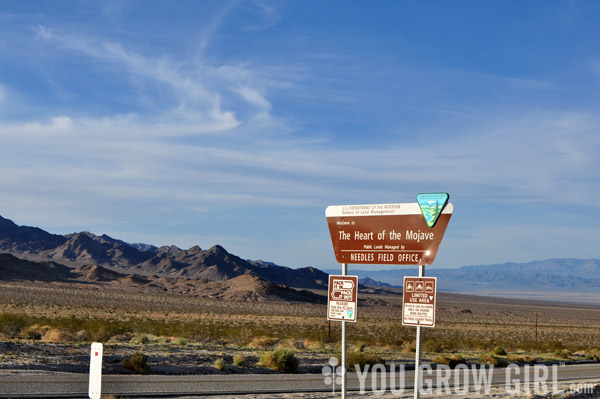
Look for this sign that identifies the stop.